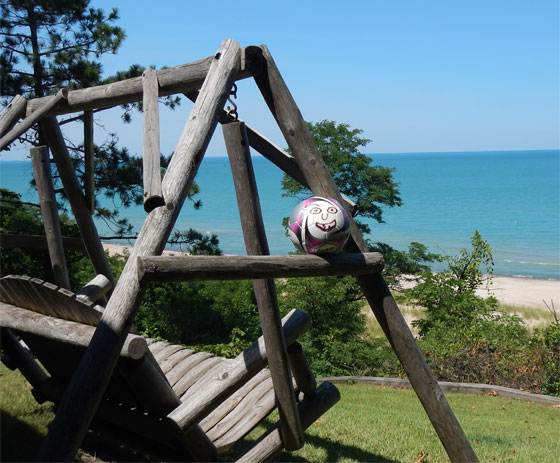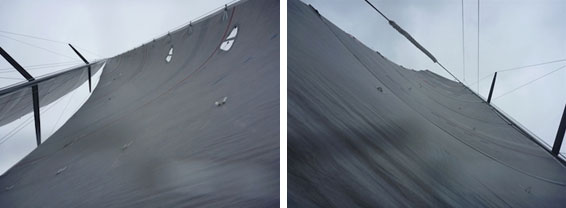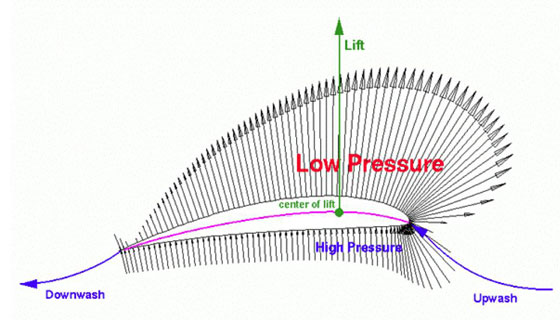I apologize for the long lapse in communication. There were quite a lot of things that needed tending to in my absence. But that said, the last few weeks back home on the shores of Lake Michigan, have been most relaxing. Though I can’t help but keep bouncing things off him, Franklin’s been enjoying his time off too. Lake Michigan, in case you’ve never seen it up close is over 300 miles long and up to 90 miles wide and all of it is fresh water. It’s much like the ocean with its waves and storms, but without the salt and tides. The wildlife may be a lot less diversified, but the water is drinkable!
 Franklin’s swinging into summer…
Franklin’s swinging into summer…
As I work through the piles of photos and videos, I’m also looking at opportunities developing – some writing projects for sure. There will likely be some talks scheduled soon too, so I will keep you posted. One interesting item out now; our friends at North Sails, who provided the great sails for Bodacious Dream, have published a story about the sails and the boat. You can find it here at this link.
:: http://www.na.northsails.com/tabid/1945/default.aspx?news_id=5557
Reading the North Sails story got me thinking a little more deeply about saiIs. I haven’t waxed much about sails before… so let me take a moment to do that now.
 Photos taken of a sail check in Wellington, NZ after 30,000 miles
Photos taken of a sail check in Wellington, NZ after 30,000 miles
Sails are the engine for sailboats, just as wings are for airplanes. The proper shape for a sail is very important in producing the speed to race the boat fast, but the shape is also necessary to keep the boat under control in various sorts of weather conditions. Advancing sail technologies and materials is a constant and ever-evolving craft, and North Sails always does a fantastic job of delivering the best. I understand their new generation of sails for the boat is even better than the last one! Way to go North Sails!
Now that I’ve pulled the sail out of the bag, so to speak, let me carry on just a bit. Many people think that sails just catch the wind and you get blown along. That’s partly so, but not the whole truth. Sails work with the air flowing across their surfaces… just like airplane wings do. If you take a closer look at sails, you’ll see the sail has a curve to it; as wind approaches it, the wind splits in two. One current flows across the front from the mast to the back of the sail, which is pretty much a straight line, while the other flows across the back of the sail. Since the sail is curved outward, the wind is forced to flow the longer route across the curved cloth of the sail.
 Wind flows over a cambered section of sail…
Wind flows over a cambered section of sail…
The two winds meet up at the back edge of the sail… and since the wind on the outside has to travel a longer distance over the same time period… (even though it may be just inches longer,) it has to flow faster to catch up to the wind flowing across the shorter distance of the front of the sails. Faster flowing wind creates low pressure; slower flowing wind means higher pressure. So what happens then is that the high pressure on the flatter side of the sail (or wing) pushes up to fill in the lower pressure on the other side. You could also say that the lower pressure on the backside of the sail (or the “top” of an airplane wing) sucks the other side up… or as we say in sailing, it “lifts,” (also a term from airplanes,) the sailboat forward, which is essentially how we sail (or fly.)
It is working with the science of these constant but dynamic factors that has led to all the many refinements we have seen in both sailing and flying over the last 60 or 70 years, always leading to ever sleeker, ever faster models. This exemplifies the great cycle of discovery that draws on observation, experience and experimentation to arrive at new learnings and designs … one of the enduring principals of the Bodacious Dream.
Ok, I’ll end it there. Hope your summer goes well. More coming soon. Stay tuned!
– Dave & Franklin
